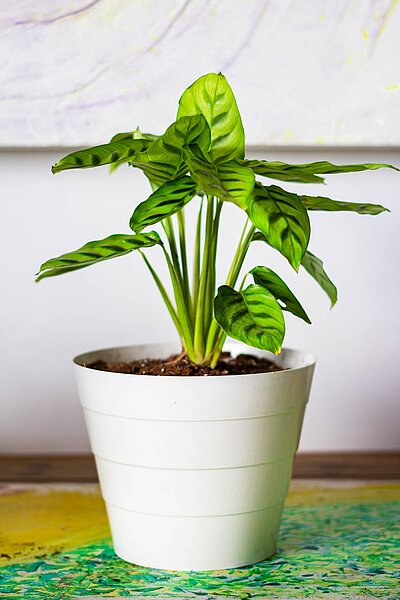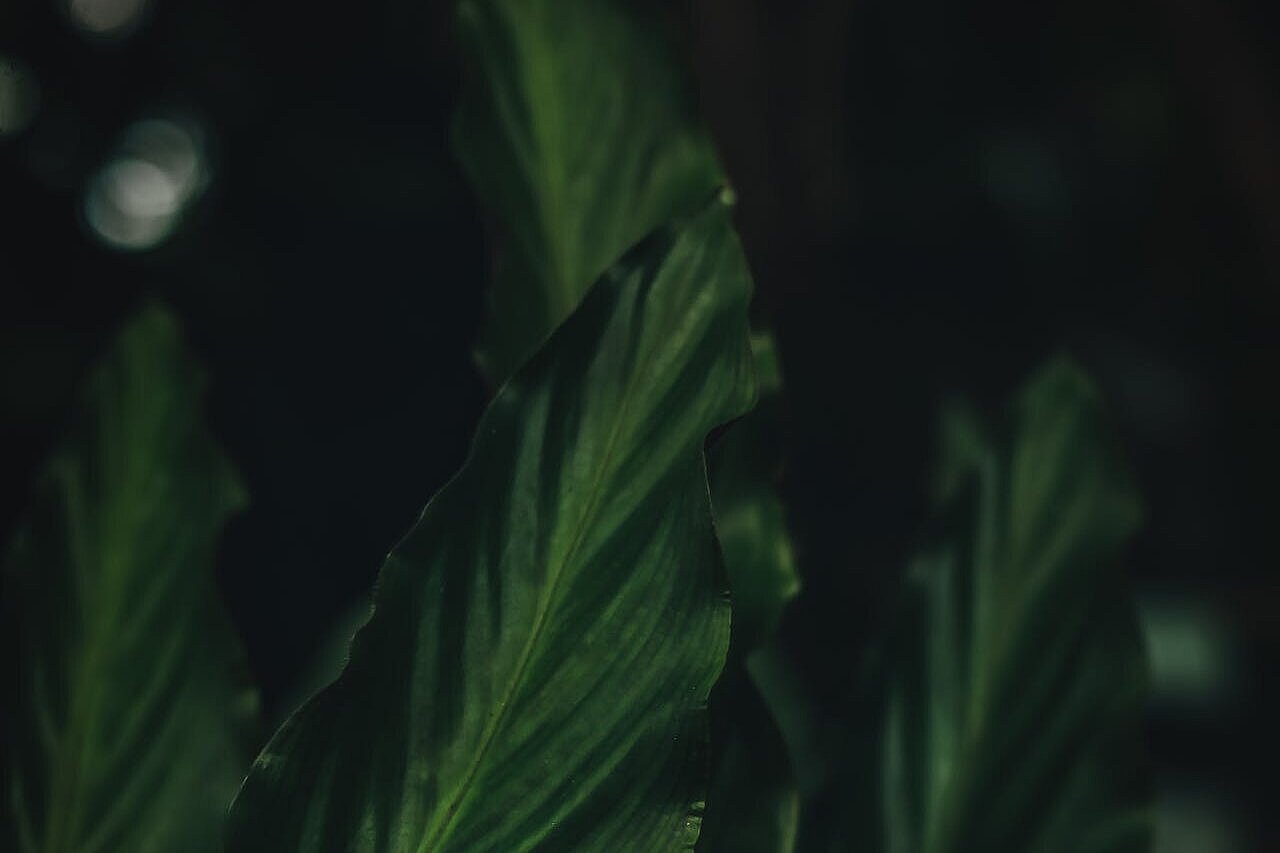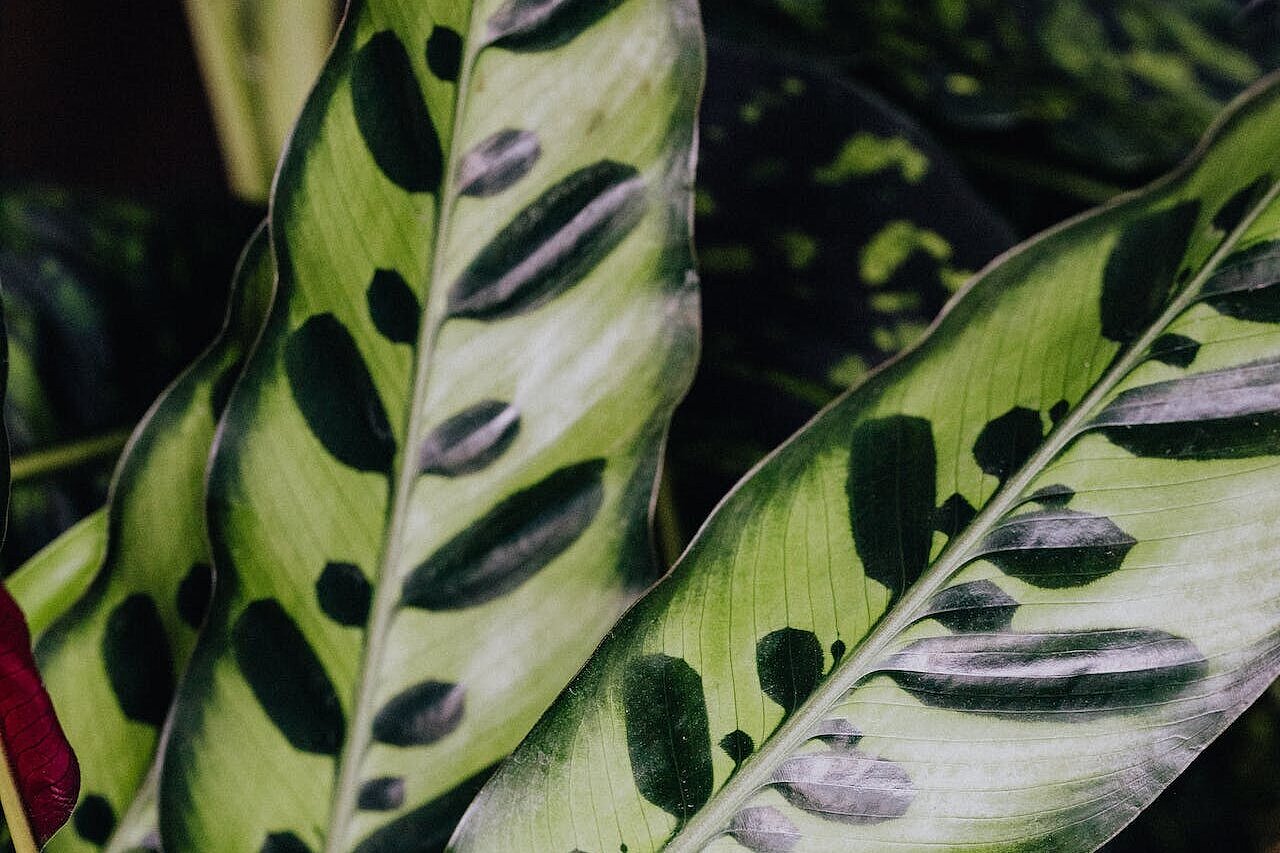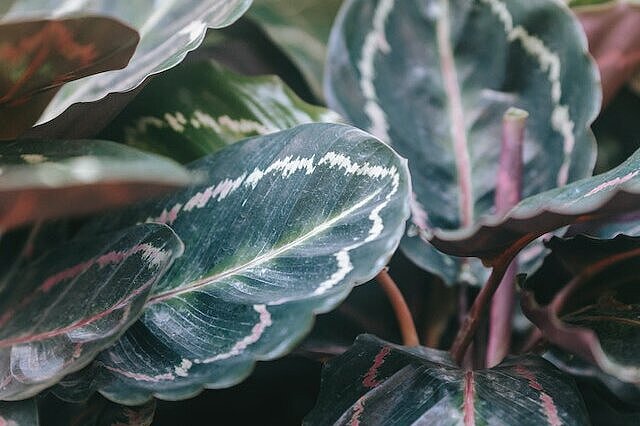Calathea zebrina

What is Calathea zebrina?
Calathea zebrina is an evergreen perennial that grows from rhizomes and reaches a height of up to one meter. The leaves sit on long, fleshy stems and are oblong-oval in shape. They can grow to over 40 cm long and 20 cm wide. The upper side of the leaf is emerald green with fir-green stripes that start from the midrib and end before the edge. The underside of the leaf is purple. The leaves fold up at dusk, which has earned the plant the nickname "prayer plant".
The flowers of Calathea zebrina are rather inconspicuous and rarely appear in indoor cultivation. They are spike-shaped and have a white to pale purple color. They hide under the leaves and are often removed so that the plant can put its energy into leaf growth.
How to care for Calathea zebrina?
Calathea zebrina is a demanding plant that requires special conditions to thrive. Here are some tips for proper care:
- Location: the plant needs a bright but semi-shaded location without direct sunlight, which can burn the leaves. A bathroom or kitchen with indirect light or a warm conservatory or greenhouse without midday sun are ideal. Draughts should be avoided.
- Temperature: The plant likes it warm and constant between 20 and 25 degrees Celsius. In winter, the temperature should not fall below 18 degrees Celsius.
- Humidity: The plant needs a high humidity of at least 60 percent to stay healthy. To achieve this, you can regularly spray the plant with low-lime water, place it on a bowl of moist gravel or expanded clay or use a humidifier.
- Watering: The plant should be kept evenly moist, but not wet or waterlogged. The substrate should always be slightly moist, but never dry out. For watering, use low-lime water at room temperature. Excess water should be removed from the saucer.
- Fertilize: The plant should be fertilized with a liquid fertilizer for green plants every two weeks during the growth phase from March to September. Fertilizing can be reduced or stopped completely in winter.
- Repotting: The plant should be repotted in a larger pot every two to three years in spring. You should use a loose, humus-rich substrate that is well-drained. You can also add a little sand or perlite to improve drainage.
- Pruning: The plant does not need to be pruned, except to remove wilted or damaged leaves. When doing so, cut as close to the base as possible and use clean scissors.
- Propagation: The plant can be propagated by dividing the rhizomes. To do this, divide the plant into several pieces when repotting, each of which has at least one leaf and one bud. The divisions are planted in pots with moist substrate and kept warm and moist until they form new roots.
Is Calathea zebrina poisonous to dogs?
Calathea zebrina is not poisonous to dogs, but it is not edible either. If your dog nibbles on the plant, he may experience gastrointestinal problems or allergic reactions. You should therefore place the plant out of his reach or offer him an alternative to chew on.
Calathea zebrina is an attractive houseplant with green striped leaves that originates from tropical Brazil. It is not poisonous to dogs, but is not edible either. To care for the plant properly, you need a bright, semi-shaded location, high humidity, a moist substrate, regular fertilizer and loose repotting. If you fulfill these conditions, you will be able to enjoy the plant for a long time.
If you notice any signs of hypersensitivity or poisoning in your dog, you should see your vet immediately. We are not a substitute for a vet, but we try to be as accurate as possible. Every dog reacts differently and we recommend you get a second opinion or consult your vet if in doubt.
Stay healthy and take good care of your four-legged friend!😊
Similar to Calathea zebrina
Calathea crocata likes light, but not direct sunlight. It feels most at home in a sunny to semi-shady location, for example in a warm conservatory or on an east or west-facing window. The hot midday...
Calathea lancifolia belongs to the Marantaceae family, which is known for its diverse and decorative leaf patterns. The plant is characterized by its long, lancet-shaped leaves, which have unique...
Calathea Medallion is a cultivated form of Calathea roseopicta, a tropical plant from the Maranthaceae family. It originates from South America, where it grows in the shade of the rainforest. Its...
Calathea sanderiana is one of the few houseplants that is completely non-toxic to dogs. It does not contain any harmful substances that could lead to symptoms of poisoning. On the contrary, it even...



